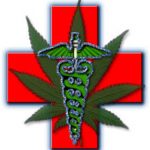A [Global Drug Survey->http://globaldrugsurvey.com/mixmag2013/
] of the web-based Net Pleasure Index is an attempt to gather
information about a much-ignored element of drug-taking
The mainstream penalty-driven approach to drugs control is both morally and intellectually flawed. Morally, it ignores the use and, in some cases, promotion of drugs such as alcohol and tobacco that are much more harmful than most “illicit” drugs. Intellectually, it ignores the reasons people choose to take drugs, and why they value them. One of the most important motivations for taking drugs, which cannot easily be acknowledged by the authorities, is personal pleasure.
Governments seem predicated on the view that all drug users are addicts, enslaved to their drug of choice by virtue of a lack of moral fibre. In fact, we know that even for the most addictive drugs – heroin, crack cocaine and crystal methamphetamine – most users do not become addicted. And of course at the initiation of use people are not addicted, with almost everyone who tries out a drug doing so through personal choice rather than being made to by dealers; so there is clearly a lot of choice in the use of drugs.
There are several reasons for people choosing to try drugs. For “legal” drugs particularly alcohol and tobacco, that most people find unpleasant to start with, the choice to use is largely driven by fashion, manifesting through peer pressure. With alcohol, the drinks industry has marketed less aversive mixtures (alcopops) to help people overcome the taste of alcohol. It also engages in massive sexually orientated advertising to induce use, much of this illegally targeted at underage drinkers via social media sites.
In the UK last year half of all 15- to 16-year-olds were intoxicated on alcohol at least once a month, despite the drinking age being 18. This behaviour is de facto “illegal” though the government turns a blind eye, which means that many are addicted to alcohol before they are able to legally purchase it. For “illicit” drugs the choice to use is more complex, as the risk of being caught and getting a criminal record needs to be taken into consideration. Yet up to 50% of young people break the law to use these at some stage in their lives. To better deal with the consequences of this use – for example up to 5% of regular cannabis users may be dependent — we need better information about the reasons for use.
In some cases illicit drug-taking is about challenging authority, but in most cases it’s about psychological exploration, often driven by positive comments and encouragement from friends. Then, once the hurdle of “breaking the law” has been overcome, the value of the drug in terms of personal pleasure and positive social engagement can be weighed against the risks of being caught. For a sizeable minority of users “illicit” drugs are taken to reduce pain and suffering (eg cannabis for multiple sclerosis, psilocybin for cluster headaches). Similarly, alcohol is often used to reduce anxiety and deaden sadness.
The fact that there are so many users of “illicit” drugs such as cannabis, MDMA and ketamine means that the pleasures must often be seen to outweigh the pain, just as they do for alcohol and tobacco. Until we properly understand the personal value of all drugs (including alcohol and tobacco), harm- and use-reduction policies are bound to fail.
In some countries even admitting that there might be a value in drug use is effectively barred from public discourse. In order to start an honest dialogue with people who use drugs we need to balance the focus on drugs-related harms by exploring pleasure, which is what motivates most people who use drugs, including alcohol.
The new web-based Net Pleasure Index, part of the 2013 Global Drug Survey is an attempt to gather this information for a wide range of drugs. It is aimed at the recreational rather than addicted user of alcohol and other drugs (tobacco users rarely admit to any pleasure, as they are mostly dependent).
Along with questions on drug policy and prescription drug use, the data it generates will help decision-making by government and individual users about the relative likelihood of new “legal highs” becoming a problem and help us better understand what motivates the use of different drugs. It will also guide advice on websites such as the Independent Scientific Committee on Drugs (ISCD) and aid harm-sation educational approaches such as the Global Drug Survey drugs meter.
If you are one the 90% of the worldwide population who use some sort of drug then please take the time to join the 13,000 people who have already taken part in this year’s Global Drug Survey and give us your insights.




 Creative Commons Attribution
Creative Commons Attribution